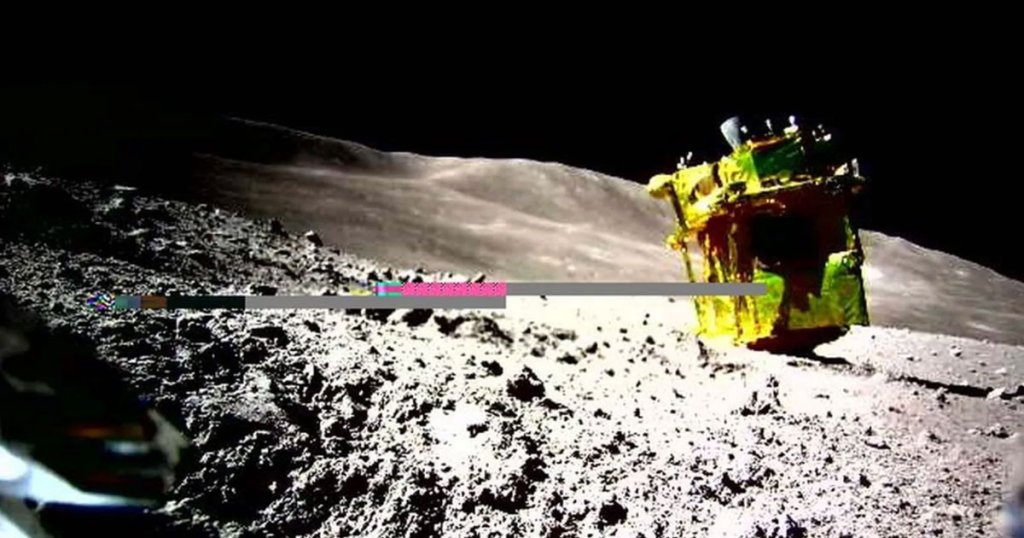
Photo Shows Japanese Moon Lander Is Upside Down on Lunar Surface (Image Credit: futurism-com)
This is just sad.
Awkward Landing
In an extremely unfortunate twist, Japan’s Smart Lander for Investigating Moon (SLIM) appears to have landed on its nose, meaning it’s now upside down on the lunar surface.
An image snapped by its much smaller companion robot called SORA-Q, which was successfully ejected before the lander touched down last week, shows the tragic scene.
“An abnormality in the main engine affected the landing attitude of the spacecraft,” the Japan Aerospace Exploration Agency admitted in a statement.
The image also explains why SLIM had so much trouble generating power with its blocked solar panels, something that ultimately forced scientists to shut it down just three hours after touchdown.
Unfortunately, the lander has no way to right itself, either, which means it’ll likely remain there with no ability to power back on.
Lunar Faceplant
Late last week, the lander technically made Japan the fifth country in the world to land a spacecraft on the surface of the Moon. But problems started cropping up despite having survived its “20 minutes of terror” as it landed.
Over the weekend, the space agency released a separate statement, giving us a renewed sense of hope.
“If sunlight hits the Moon from the west in the future, we believe there’s a possibility of power generation, and we’re currently preparing for restoration,” JAXA wrote.
To get the image snapped by SORA-Q sent back to Earth, the robot had to send the data to a second robot dubbed LEV-1, which SLIM also successfully deployed while landing. LEV-1 has a way to independently contact mission control.
Despite landing at an awkward landing, SLIM still managed to get a glimpse of its surroundings, a desolate and rocky area.
Still, JAXA is calling the mission a big win.
“The accomplishment of LEV-1’s leaping movements on the lunar surface, inter-robot communication between LEV-1 and SORA-Q, and fully autonomous operations represent ground-breaking achievement,” the agency said. “It would be regarded as a valuable technology demonstration for future lunar explorations, and the acquired knowledge and experience will be applied in upcoming missions.”
More on SLIM: Japan Trying to Bring Dead Moon Lander Back to Life





